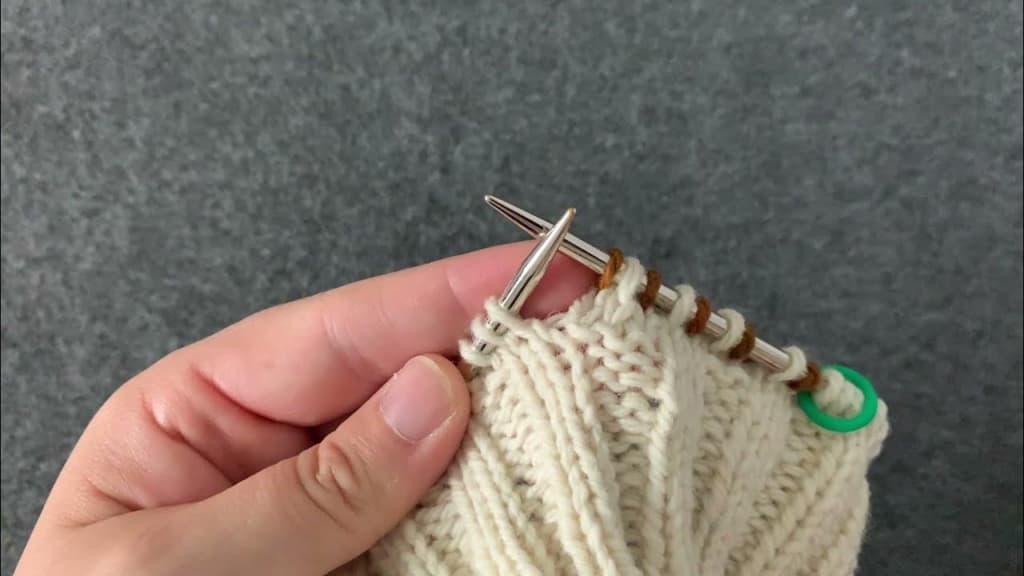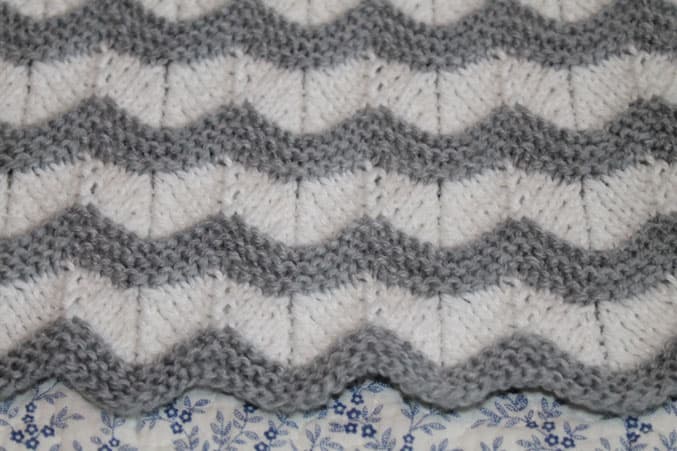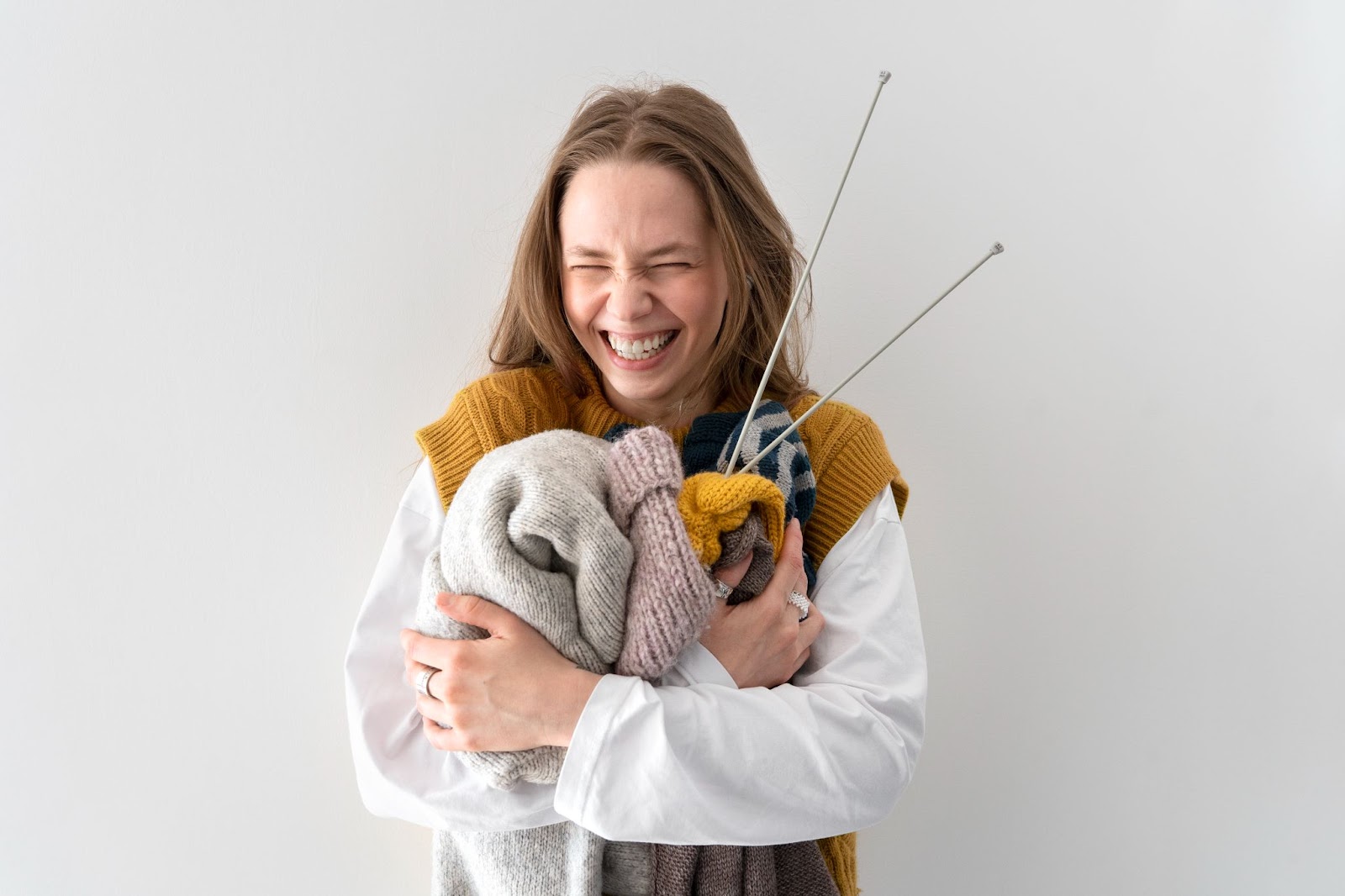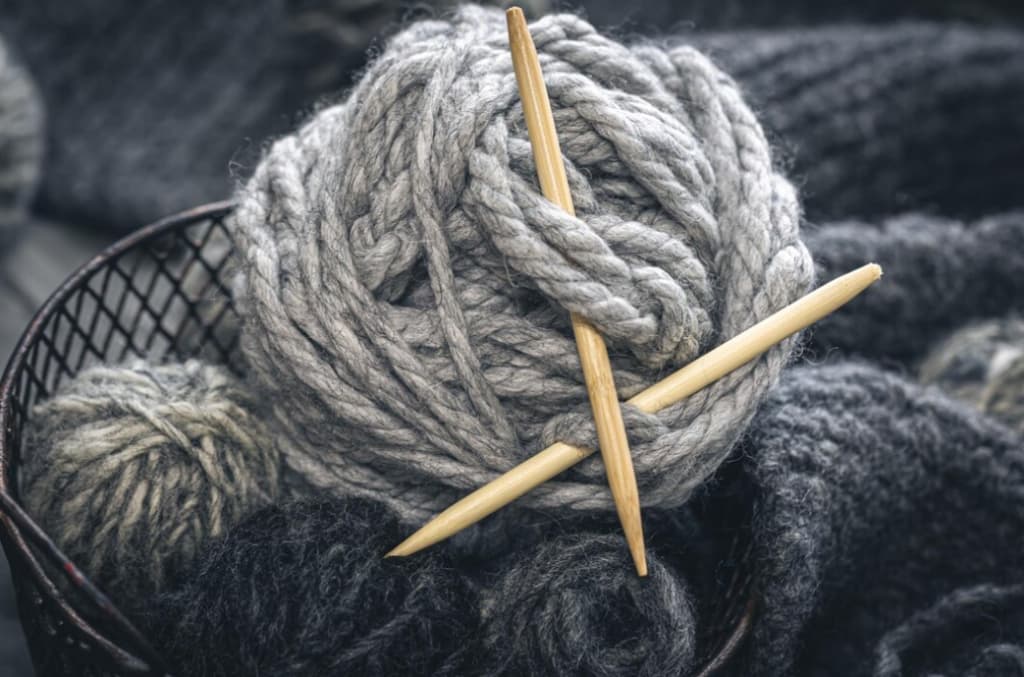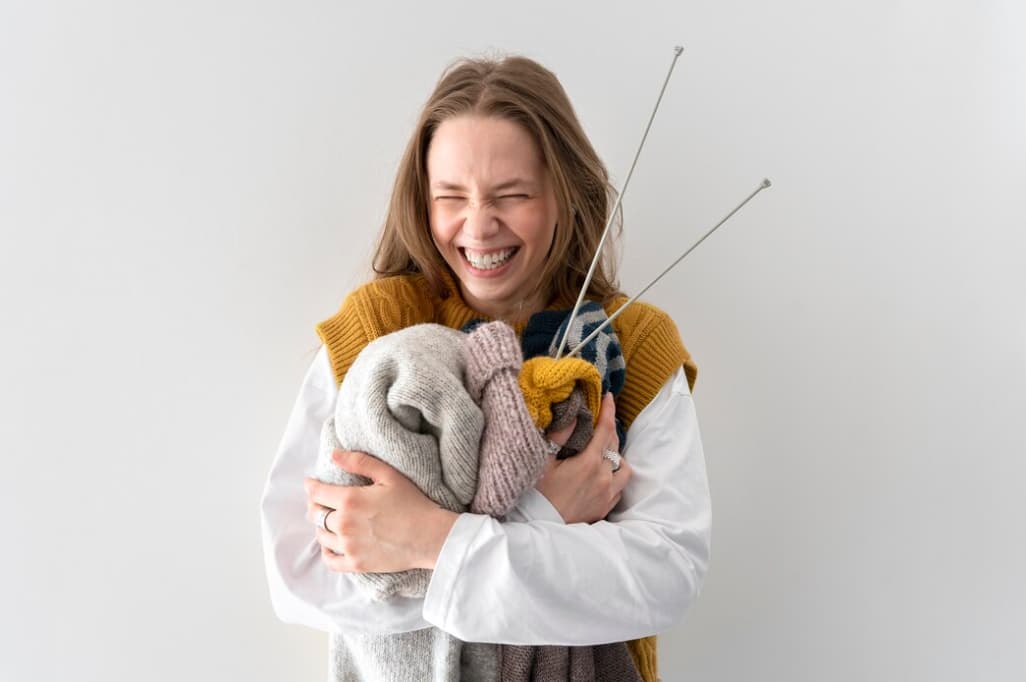The Knit Front, Slip Back (KFSB) increase method is a refined and straightforward technique, ideal for patterns requiring numerous increases. Notably used in the Pi Shawl pattern from Darn Good Yarn, this method is both efficient and less conspicuous. For those interested in this pattern, Darn Good Yarn offers a 15% discount using the code “knittininnorthpark15”.
The Subtlety of the KFSB Method in Various Stitches
The KFSB technique is particularly effective in stockinette stitch, where it remains less noticeable compared to its appearance in garter stitch. This method is a valuable skill for knitters, applicable in a variety of projects throughout their knitting journey.
Step-by-Step Guide to the KFSB Method
To execute the KFSB method:
- Knit the Stitch: Begin by knitting the stitch normally, but leave it on the left-hand needle;
- Position the Needle: Bring the right-hand needle to the back of the stitch as if to perform a Knit Front and Back (KFB) increase;
- Slip the Stitch: Instead of knitting through the back, simply slip the right-hand needle through the back of the stitch;
- Complete the Increase: Transfer both the knit and slipped stitches to the right-hand needle, effectively creating one new stitch.
Video Tutorial for Visual Learning
For visual learners, a video tutorial is available to demonstrate the KFSB technique. This resource can be particularly helpful for knitters who find visual aids more instructive than written descriptions.
Comparative Table: Knit Front, Slip Back (KFSB) vs. Knit Front and Back (KFB) Increase Methods
| Feature | Knit Front, Slip Back (KFSB) | Knit Front and Back (KFB) |
|---|---|---|
| Visibility in Fabric | Less noticeable, more subtle | More visible, creates a small bump |
| Complexity | Slightly more complex | Relatively simple |
| Suitability for Patterns | Better for delicate or intricate designs | Suitable for robust, casual patterns |
| Stitch Count Increase | One additional stitch per increase | One additional stitch per increase |
| Ideal for Stitch Type | More effective in stockinette stitch | Works well in garter and stockinette stitches |
| Learning Curve | Requires practice for perfecting | Easier for beginners to learn |
| End Result | Creates a smoother finish | Can be noticeable, affecting texture |
Two-Color Chevron Knitting Pattern: Enhancing Your Knitting Projects
Incorporating the two-color chevron knitting pattern can significantly elevate the aesthetic of various knitting projects. This section is dedicated to integrating this vibrant pattern alongside the subtle Knit Front, Slip Back (KFSB) increase method, creating a harmonious blend of texture and color.
Characteristics of the Two-Color Chevron Pattern:
- Visual Appeal: The chevron pattern, with its zigzagging lines, creates a striking visual effect, especially when executed in two contrasting colors;
- Versatility: This pattern is perfect for numerous projects, from cozy blankets to stylish scarves or even unique garments;
- Complement to KFSB: When combined with the KFSB method, the two-color chevron pattern can achieve a more refined look, making your knitting projects stand out.
Integrating the Pattern with KFSB:
- Color Selection: Choose two contrasting colors that complement each other well to highlight the chevron design;
- Stitch Technique: Use the KFSB method for increases within the chevron pattern, which will make the increases less noticeable and the pattern more seamless;
- Pattern Repetition: Alternate the colors systematically to create the chevron effect, ensuring that the color change coincides with the chevron peaks and valleys for a cohesive design.
Application in Projects:
- Blankets and Throws: Use the two-color chevron pattern for a dynamic and cozy blanket, perfect for adding a touch of elegance to any living space;
- Scarves and Wraps: A two-color chevron scarf or wrap can be a stylish accessory, offering both warmth and a fashionable flair;
- Sweaters and Cardigans: Incorporate the chevron design into a sweater or cardigan for a unique, eye-catching piece of knitwear.
Conclusion
The Knit Front, Slip Back method is a subtle yet effective way to increase stitches in knitting projects. Its less noticeable nature in certain stitch patterns, like stockinette, makes it a desirable technique for creating smooth transitions in knitted fabrics. Whether you are working on a complex shawl or a simple garment, mastering the KFSB method can enhance the quality and finish of your knitting work.
